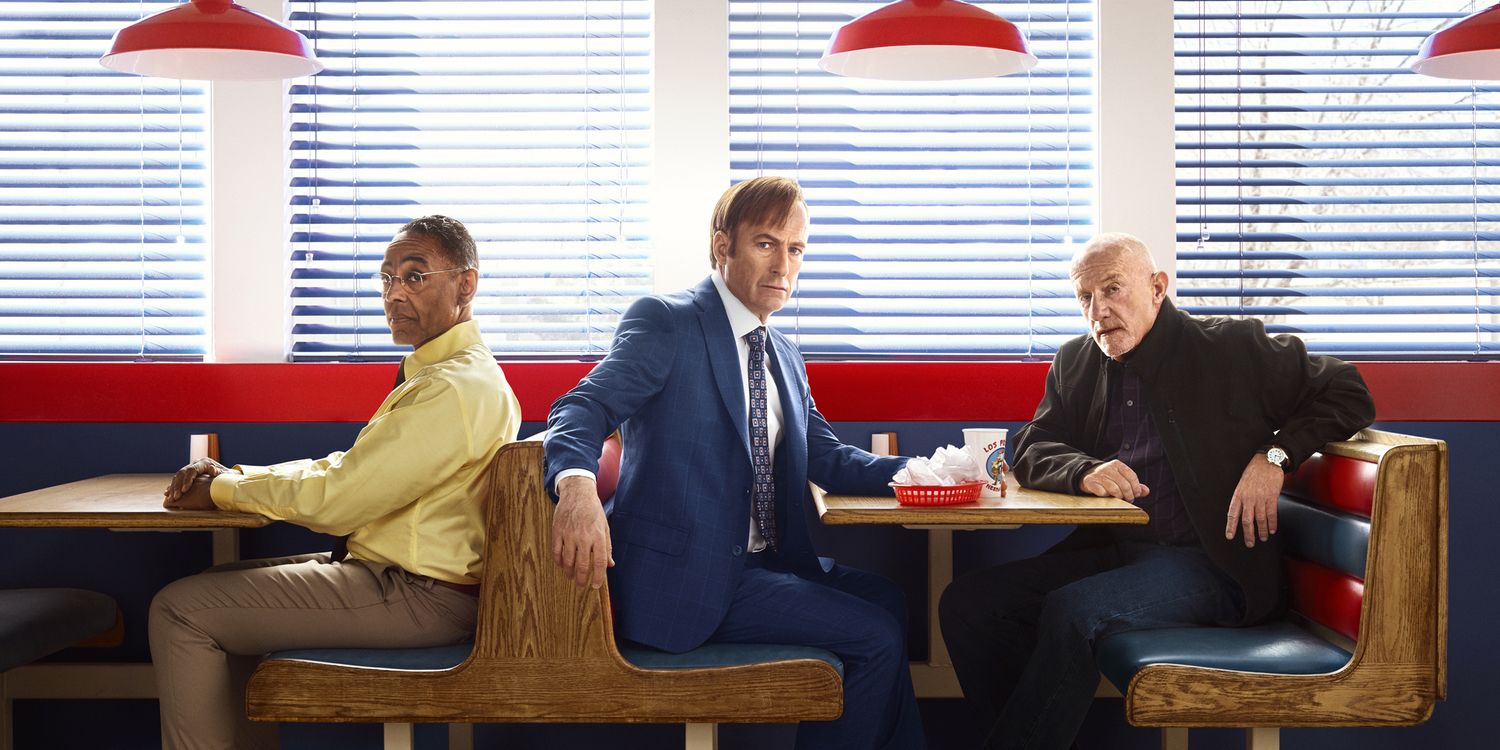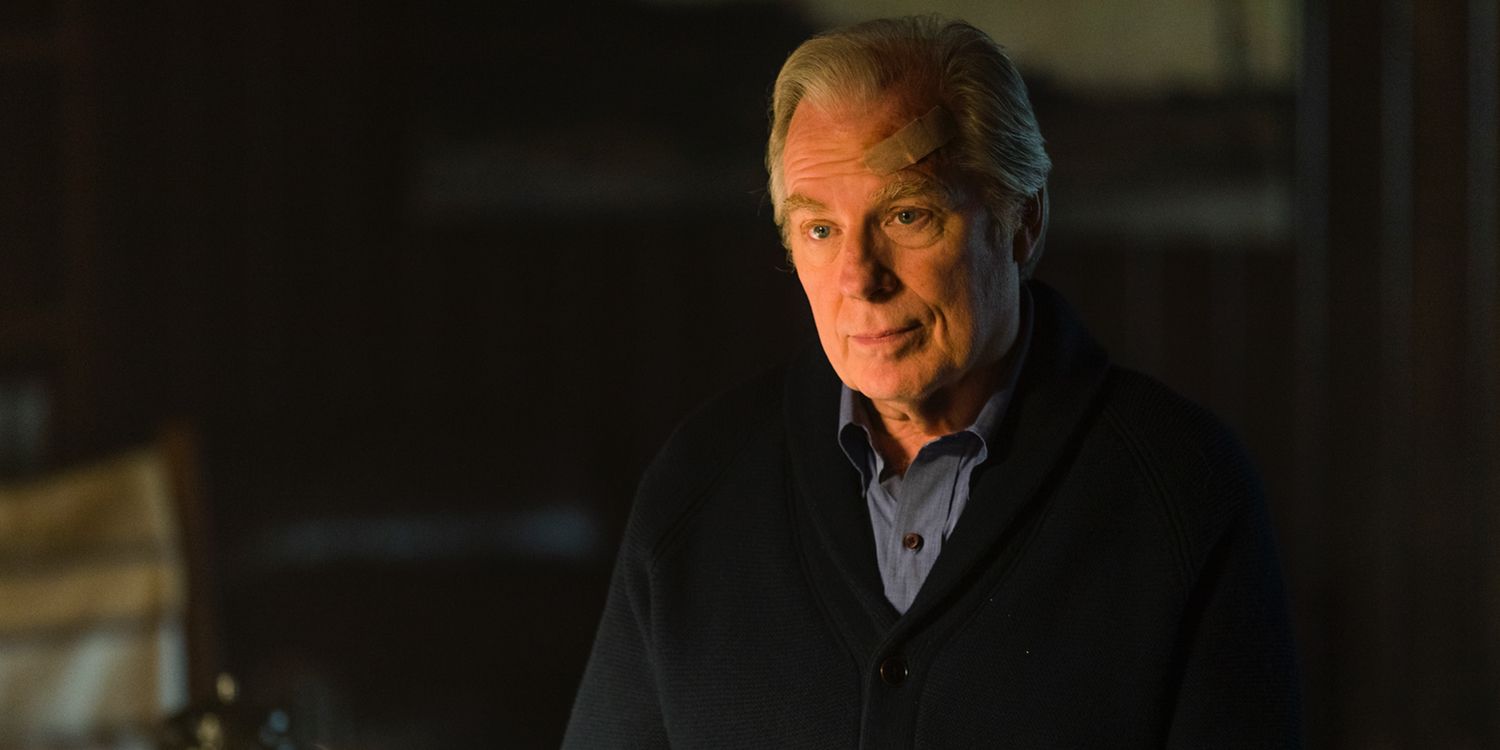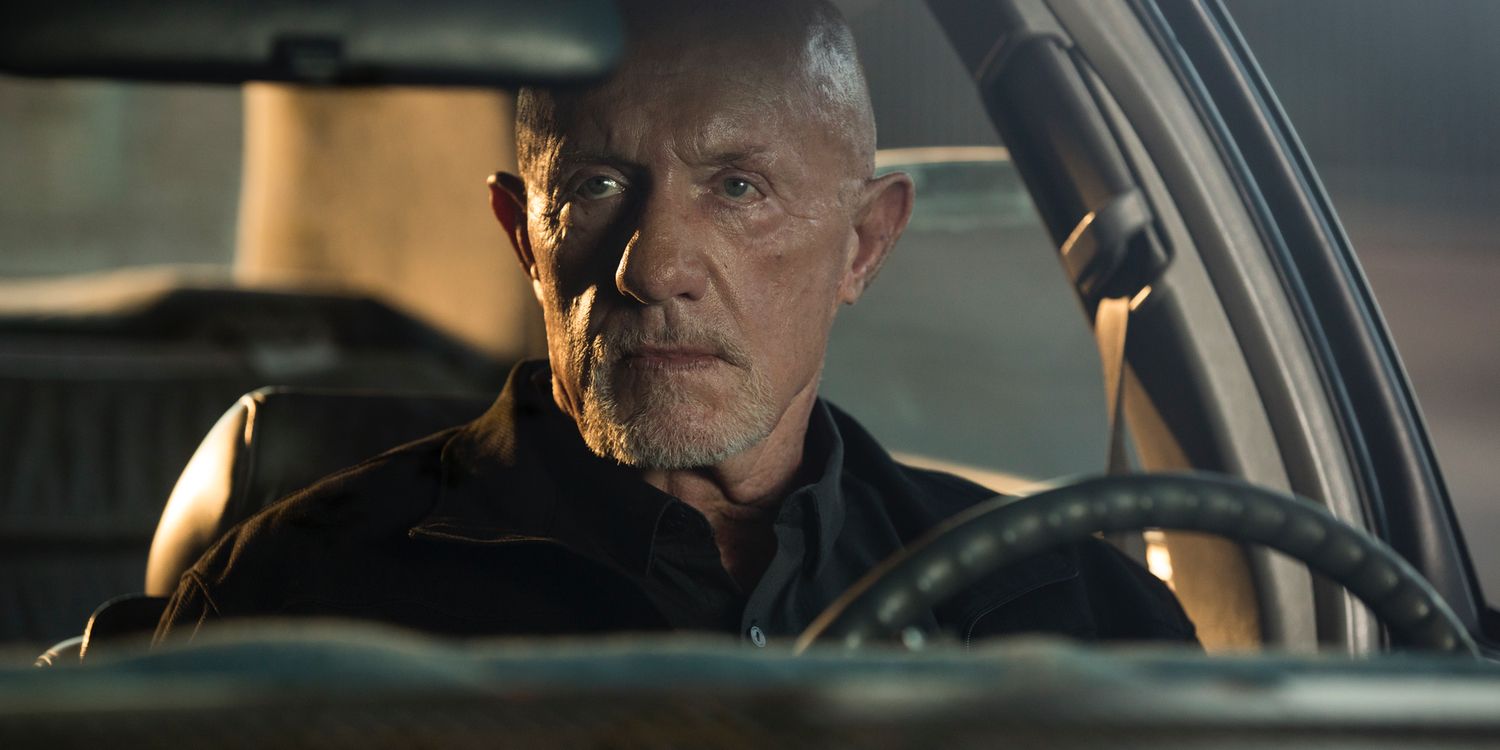Better Call Saul season 3 finds itself in a unique place. Season 2 delivered a series of strong character moments for the likes of Jimmy, Mike, Kim, and especially Chuck, but nevertheless was a sometimes languorous affair that, while undoubtedly fascinating for those who find legal paperwork to be intrinsically dramatic and lively entertainment, could only push its main plots so far before it was forced to resolve them. That left the season to end on the double cliffhanger of Jimmy McGill's taped confession of having committed a felony and the implicit arrival of Giancarlo Esposito's Gus Fring, everyone's favorite dapper purveyor of fast food fried chicken and, you know, meth.
As good as so many of the character beats have been since the series first premiered, Better Call Saul is, due to it status as a prequel, beholden to the looming presence of off-screen characters. From Gus Fring to Jesse Pinkman to, of course, Walter White, the spinoff is perpetually careening toward what is right around the corner no matter how many times the show's own narrative and distinct characters seem want to take the wheel and steer it in the opposite direction. Perhaps that was the impetus for the long arc of Jimmy's adventures in the subtle complexities of eldercare law, his on-again, off-again relationship with walking the straight and narrow, and his romance with Kim Wexler, who has since become his business partner. That's created an interesting push-pull between the series' organic storytelling instincts that have sprung up over the past two seasons and the five-season storyline that audiences have already seen play out – the one that ends with Saul Goodman assuming yet another identity to manage a Omaha Cinnabon. As is the case with all prequels, Better Call Saul has already had its dramatic payoff, and yet as the third season begins, it finds a way to manage the reality of that situation and still get its creative juices juicing by insisting a Breaking Bad reunion won't be a retread of what's already been seen.
One of the more dramatic things to happen in season 2 was the show's continued effort to delay the arrival of its title character. In an interesting move, creators Vince Gilligan and Peter Gould opted to herald the arrival of another major character whose claim to fame was his role in a story the audience already knows but is yet to unfold for the characters. The pressure of being a prequel and the promise of its title coming to fruition have seen the series once again under the shadow it had seemingly escaped last season. As such, the big question surrounding this third season is whether or not with the reintroduction of a fan favorite Saul will lose what makes it unique or if the proprietor of Los Pollos Hermanos is exactly the ingredient the series needs.
No doubt fans of Breaking Bad are chomping at the bit to see Esposito return to the role of Gus Fring, and bring with him a sense of terrifying fastidiousness through which each service-oriented smile is not only a self-satisfied acknowledgement that the customer isn't always right, but that they have absolutely no idea how the how the sausage (or in this case, the chicken) gets made. While there are plenty of reasons to cheer Esposito's arrival, and to marvel at his willingness to reprise a role that will arguably go down as the most significant of his long career, there's as much reason to be leery of Fring's pending presence.
Better Call Saul has spent two seasons developing its own homegrown characters and storylines, giving audiences the likes of Kim Wexler, Chuck McGill, Howard Hamlin, and as evidence of the show's occasional run-ins with brilliance, Jimmy McGill – the title character who wasn't. The series had also managed to give Jonathan Banks's Mike Ehrmantraut a storyline imbued with enough pathos that his Terminator-esque presence in Breaking Bad is now a richer experience for those who've embarked on a re-watch of that series. But Banks is in many ways the series' co-lead along with Bob Odenkirk, whereas Esposito is a deadly effective villain best used when sprinkled sparingly into the narrative like Walter White's favorite bean-derived toxin, or, as the show has already demonstrated, as an implicit threat hovering somewhere in the periphery of the storyline. The concern now is: Will Fring's re-introduction (or, really, his chronological introduction) and the character's immense gravitational pull send the series' original characters far from their usual orbit around Jimmy and Mike?
Upsetting the natural order of things makes for good drama and Gus Fring is nothing if not well equipped to deliver his fair share of upsetting moments. But in the two episodes AMC released for critics, Fring is as he's always been in relation to Better Call Saul: just off to the side somewhere. And yet, because of the puzzle made from last season's titles, the season 3 marketing, and Esposito's charming appearance at the winter TCAs, it's as though Gus Fring is already there. So when the season kicks off with 'Mabel', an episode largely concerned with the notion of escalation, it feels fitting. It's there in Jimmy misreading Chuck's intentions to use his confession as the impetus of a brotherly détente, when in fact the elder McGill is simply gearing up for war. Meanwhile, Mike temporarily suspends his one-man war on Hector Salamanca to investigate the note that will inevitably lead him deeper into a more prolonged and far more toxic conflict.
'Mabel' toes the line between continuing the storylines set at the end of season 2, and establishing itself as the connective tissue connecting this show to the series that spawned it. As such, it's to the credit of Esposito and the show's creators, then, that Better Call Saul can make use of a character without ever having him appear onscreen. It is a strange way to view an hour of television that's part of a series that has existed just fine for 20 episodes without him, but it's also one of the few advantages of a prequel, too. In the sort of situation Gilligan and Gould are building, characters like Gus Fring don't require an introduction; they simply need to be alluded to in order to conjure up a string of strong emotions, and that's precisely what they manage to do in the premiere. Whether Jimmy is learning how to peel duct tape without ruining a bookshelf's varnish, or Mike is pulling a car apart piece by piece like Gene Hackman did his apartment in The Conversation, one name is never too far from the proceedings. It puts an inordinate amount of emphasis on a character who isn't even there yet, but it also makes the anticipation of his arrival and the change it will bring almost palpable.
In the end, that's only part of what's appealing about the character's return. The other part will be in discovering the part he plays in how season 3 transitions Jimmy to Saul and Saul (presumably) back to Mike as they both end up on the cooked books of Los Pollos Hermanos. It's a big ask for a series that has so far enjoyed taking a leisurely stroll through the life of a small-time crook trying to act against his base nature, but if a bigger, darker, faster-paced season is in order, then the pending arrival of Gus Fring will be just what the show needs. And the season premiere is well on its way to making sure that happens.
Next: Better Call Saul: 16 Breaking Bad Connections And Easter Eggs You Missed
Better Call Saul continues next Monday with 'Amarillo' @10pm on AMC.



